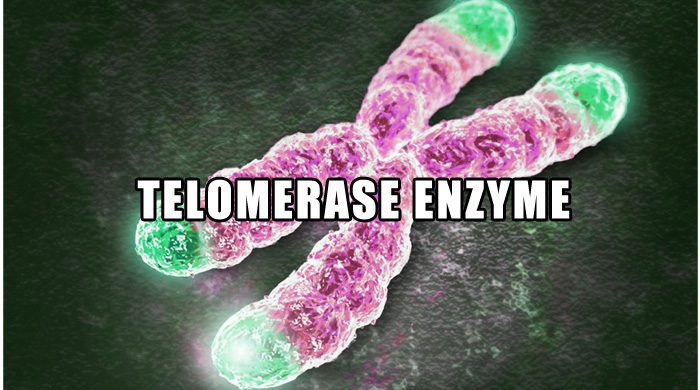Telomerase Enzyme

The telomerase enzyme is a reverse transcriptase enzyme that adds DNA back to the ends of the telomere caps on chromosomes. The telomerase enzyme is able to do this by copying part of its RNA into the DNA of the telomere.
This is important because this adds to the lifespan of a cell. In most somatic or body cells each time a cell replicates it loses part of its telomere.
A telomere is the repetitive sequence of nucleotide DNA at the end of a chromosome the doesn’t contain genetic information.
Telomeres are like the plastic caps at the end of shoelaces that keep the shoelaces from fraying, and they protect to the genetic information stored in the DNA of the chromosome.
Telomeres keep the chromosome from unravelling and binding or fusing with nearby chromosomes.
Each time a cell divides it loses piece of the telomere cap because the enzymes that duplicate the telomere cannot duplicate it to the very end of the cap.
When the cap reaches a certain length the cell can longer divide and deteriorates, dies, or is transformed into a cancer cell.
The telomerase enzyme is a ribonucleoprotein that is able to copy back lost sections of repetitive DNA to the telomeres which prolongs the life of the cell and the person or animal.
The telomerase enzyme is active in germ cells, activated lymphocytes, and certain types of stem cells, but is virtually inactive in cells of the body. Studies have shown that choices in diet can increase telomerase activity in the body.
[1] Reconstitution of telomerase activity in normal human cells leads to elongation of telomeres and extended replicative life span
[2] Effect of comprehensive lifestyle changes on telomerase activity and telomere length in men with biopsy-proven low-risk prostate cancer: 5-year follow-up of a descriptive pilot study






